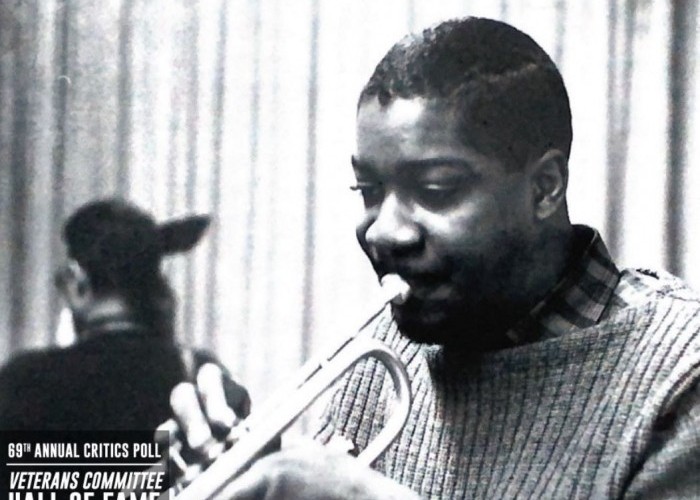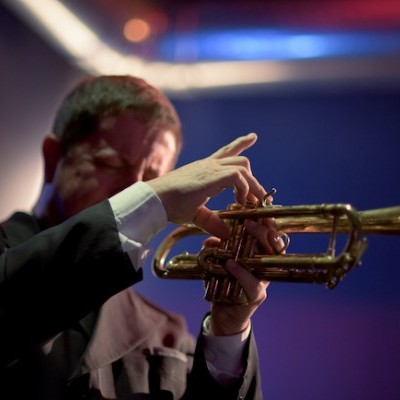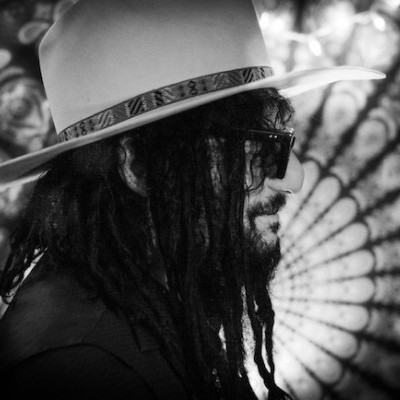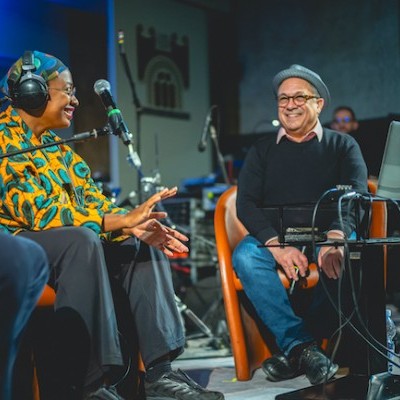Jul 9, 2024 11:35 AM
Trumpeter, Educator Jim Rotondi Dies at 61
Jim Rotondi, a renowned hard-bop trumpeter, composer and educator, died suddenly on July 7 at a hospital in France. He…

Booker Little, 2021 Veterans Committee choice for the DownBeat Hall of Fame
(Photo: DownBeat Archive)The most wide-ranging article this magazine ever published about trumpeter Booker Little was his obituary. It was the Nov. 9, 1961, issue, about one-third of a page under a one-column headline. Sixty years later, we atone as the Veterans Committee votes Little into the DownBeat Hall of Fame.
Little had died a month before on Oct. 5, 1961. At 23, he was still a newcomer in the advance guard of the ’60s jazz underground and not yet prominent enough to warrant the marquee attention of the jazz press. He never saw a DownBeat cover story or a feature Q&A. Equally silent was John S. Wilson, the jazz voice of the New York Times, which did not even note his passing.
But Little’s thinking was cutting at the edges of the future. It was the year of Ornette Coleman’s Free Jazz, a record so polarizing that DownBeat reviewed it twice — in separate zero- and five-star appraisals. Little could easily have been part of that experiment. He shared a common sensibility with its authors — Coleman, Eric Dolphy, Freddie Hubbard, Scott LaFaro. And he heard about it quickly. An hour after Dolphy completed the Free Jazz session in New York, he drove to Englewood Cliffs to record his first collaboration with Little, Far Cry, for Prestige. All on Dec. 21, 1960. Within a year, Little would be gone.
By the time Ornette Coleman died 54 years later, he had won a Pulitzer Prize, a MacArthur Fellowship, a pedestal in jazz’s valhalla and a front-page obit in the Times. What might have awaited Booker Little can merely be imagined. He seemed to be onto something, but would never know such acclaim. Like Charlie Christian and Jimmy Blanton, he made his mark inside a blink of time, then left posterity to access its impact. But Christian and Blanton were lucky enough to share a blazing spotlight with mega-mentors Benny Goodman and Duke Ellington. People knew them. Little was less fortunate, thus less noticed.
Several musicians noticed him, though, and provided early mentorships. After taking up the trumpet at 12, he had achieved a sufficient plateau of technique by his mid-teens to play informally with pianist Phineas Newborn, a fellow native of the Memphis area. Little went on to study at the Chicago Conservatory, where he met Sonny Rollins. The two were sharing an apartment on the South Side when Rollins introduced him to Max Roach, who was looking for his next Clifford Brown. Roach found what he was looking for in Booker Little, who made an impressive record debut at 20 in June 1958 on Max On The Chicago Scene for EmArcy. By the time he left Roach eight months later, he had recorded six more albums, including his first as leader, Booker Little 4 And Max Roach (UA/Blue Note).
As a trumpet player, Little played with an orderly virtuosity — clean, precise, articulate, but without the audacity and high-note acrobatics of the earlier bop masters. He followed in the gentler jurisdictions of Fats Navarro and Clifford Brown. Critic John Litweiler characterized his sound as “lyric abstraction.” In New York, though, Eric Dolphy, Julian Priester and others awakened him to the possibilities that lay beyond the frontiers of hard-bop. While he never embraced the free-jazz model, by the time he recorded with Dolphy on his penultimate album, At The Five Spot, in July 1961, he was clearly comfortable and engaged with its more untamed insubordinations. Perhaps this had a liberating influence on his writing, which was well showcased on his last record, Victory And Sorrow, for Bethlehem. While his compositions obey the extended canons of melody and harmony, according to critic Michael Cuscuna, “they are more ambitious than then standard 12-, 16- and 32-bar themes and chord sequences that prevailed in the ’50s.”
Little died before his place as a transitional figure in jazz was clear. No one could know where the bridges he was building might lead, least of all Little himself. The year he died, his name appeared in neither the DownBeat Critics Poll nor Readers Poll, although he did place 10th among the “new stars.”
“My approach to playing,” he told DownBeat during a visit to the New York office shortly before his death, “has been to find a sound around my sound and then write. Writing is a special thing to me. I want to play … but I hear so many things for others. I’ll develop … and I’ll do it in my own way. … You can’t sacrifice integrity and still be you. But there, you have to listen to what they’re saying to you. I won’t hit my head against the wall; I see too many people die that way.”
Days later, Little met his wall: kidney failure. DB

Jim Rotondi was acclaimed for his wide, round trumpet tone, remarkable virtuosity and assured swing.
Jul 9, 2024 11:35 AM
Jim Rotondi, a renowned hard-bop trumpeter, composer and educator, died suddenly on July 7 at a hospital in France. He…

Charles Lloyd, seen here at the 2024 New Orleans Jazz & Heritage Festival, makes DownBeat Poll history!
Jul 11, 2024 12:23 PM
The incomparable Charles Lloyd swept the 72nd Annual DownBeat Critics Poll, becoming the first artist ever to earn…

“Being president of Blue Note has been one of the coolest things that ever happened to me,” Was said. “It’s a gas to serve as one of the caretakers of that legacy.”
Jun 4, 2024 12:21 PM
Sitting with Don Was is a comfortable and unhurried exercise. He may seem slightly reserved at first, but ideas and…

“She reminds me of my childhood and makes we want to cry,” Cécile McLorin Salvant, pictured here with writer Ashley Kahn, said of Dianne Reeves.
Jun 11, 2024 12:31 PM
Italy’s Umbria Jazz Winter is one of those rare annual festivals that not only coincides with a major holiday —…

Maria Schneider said of Decades, her new compilation release: “I just wanted to create something, put it in a beautiful box and say, ‘Look at what we did.‘”
Jun 18, 2024 12:00 PM
Maria Schneider opened the sleek black box and placed it on a coffee table in her Manhattan apartment. Inside lay the…